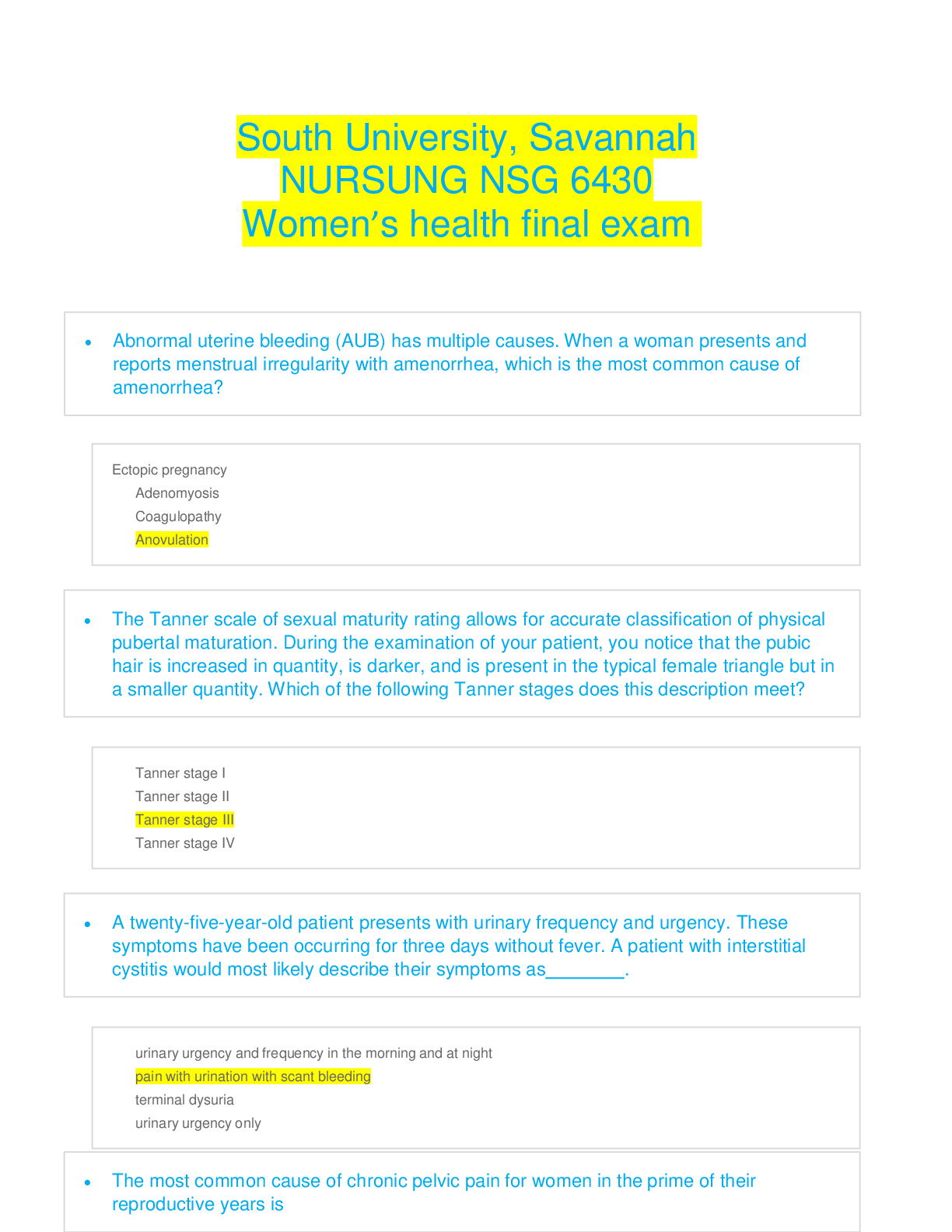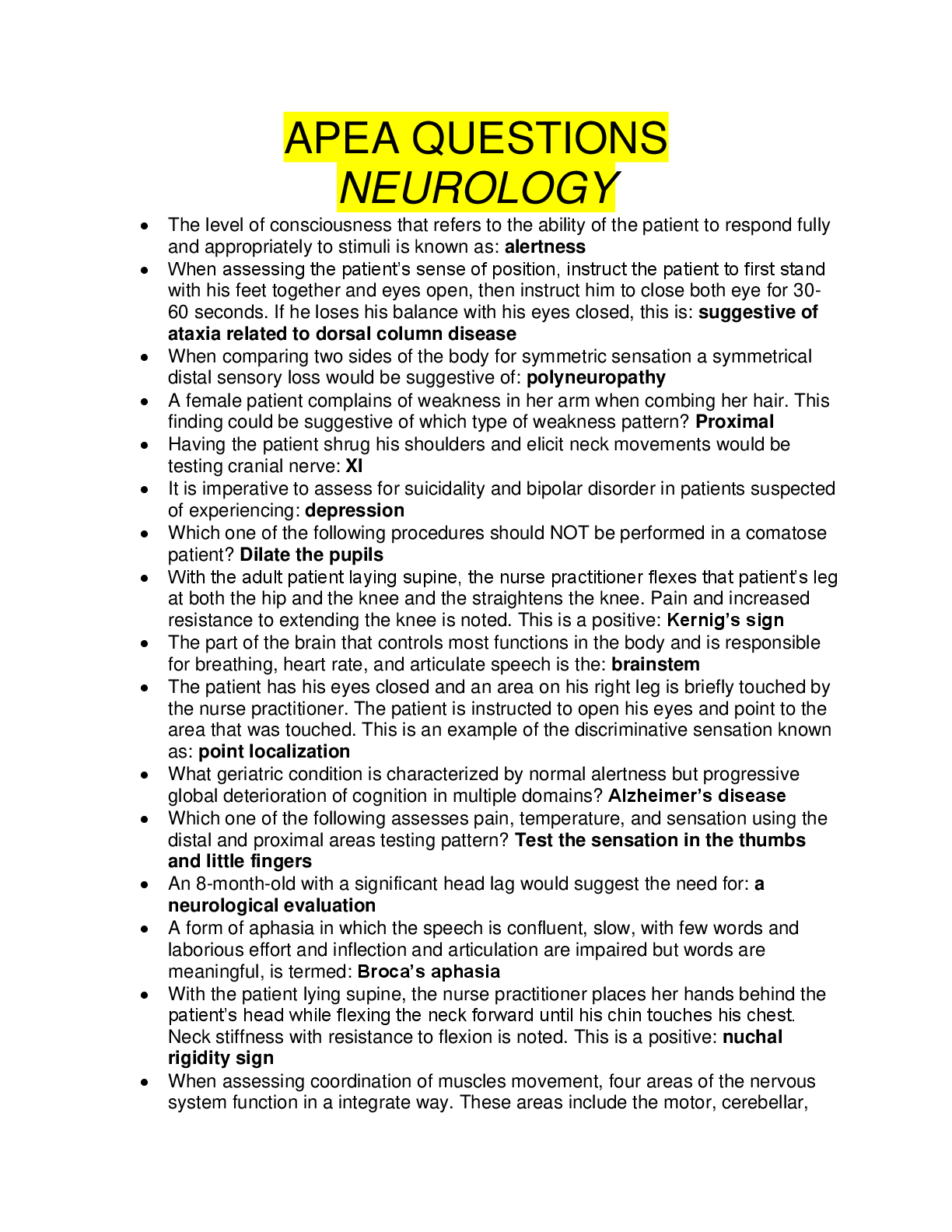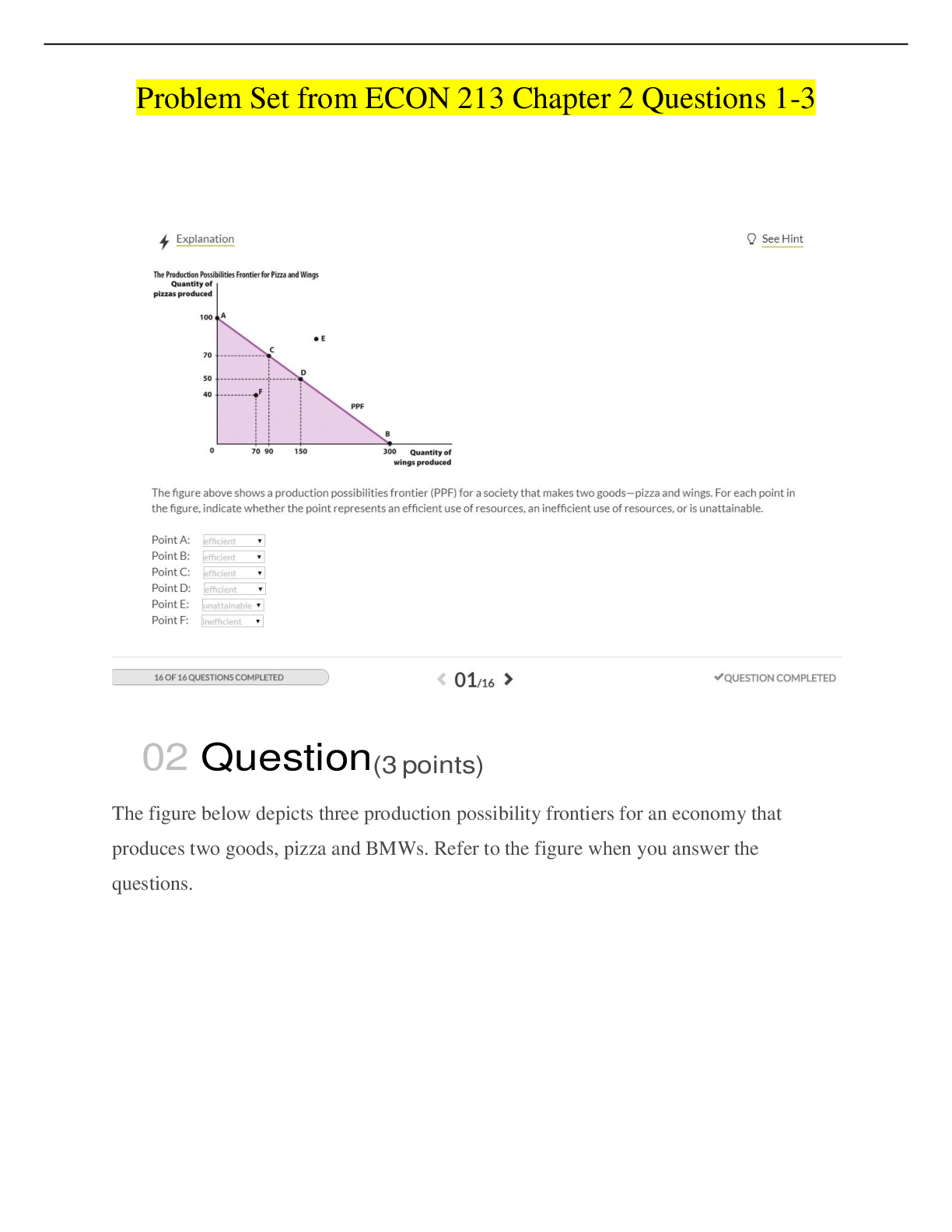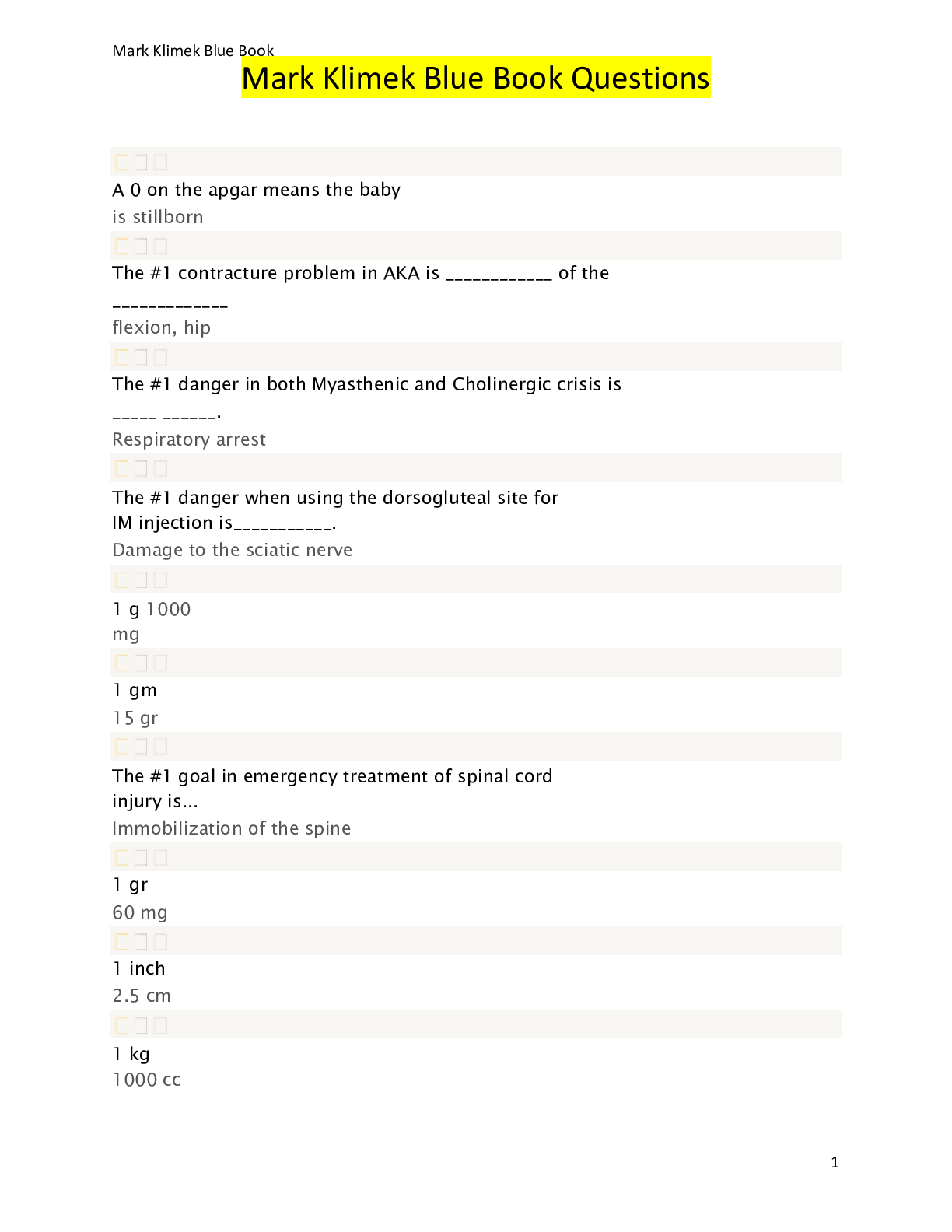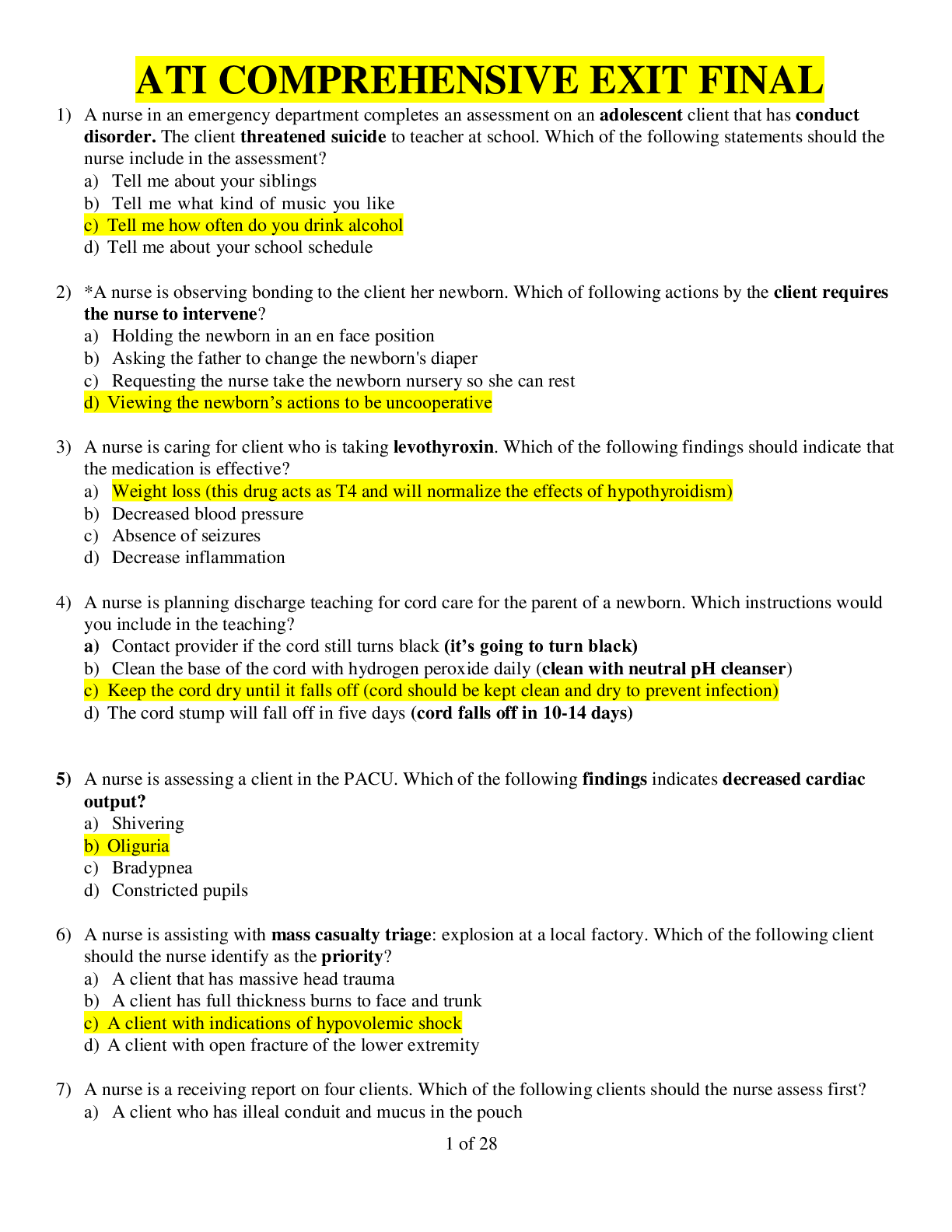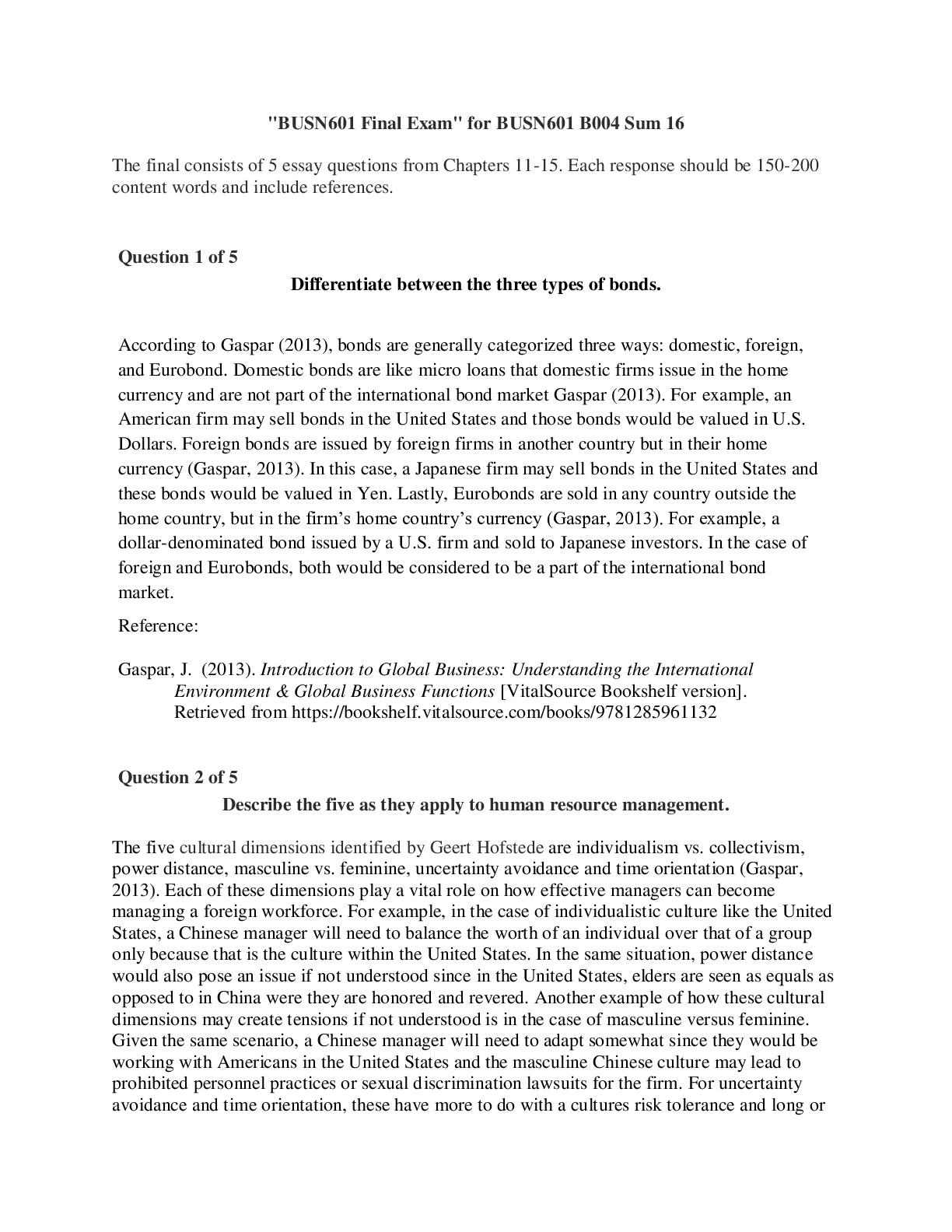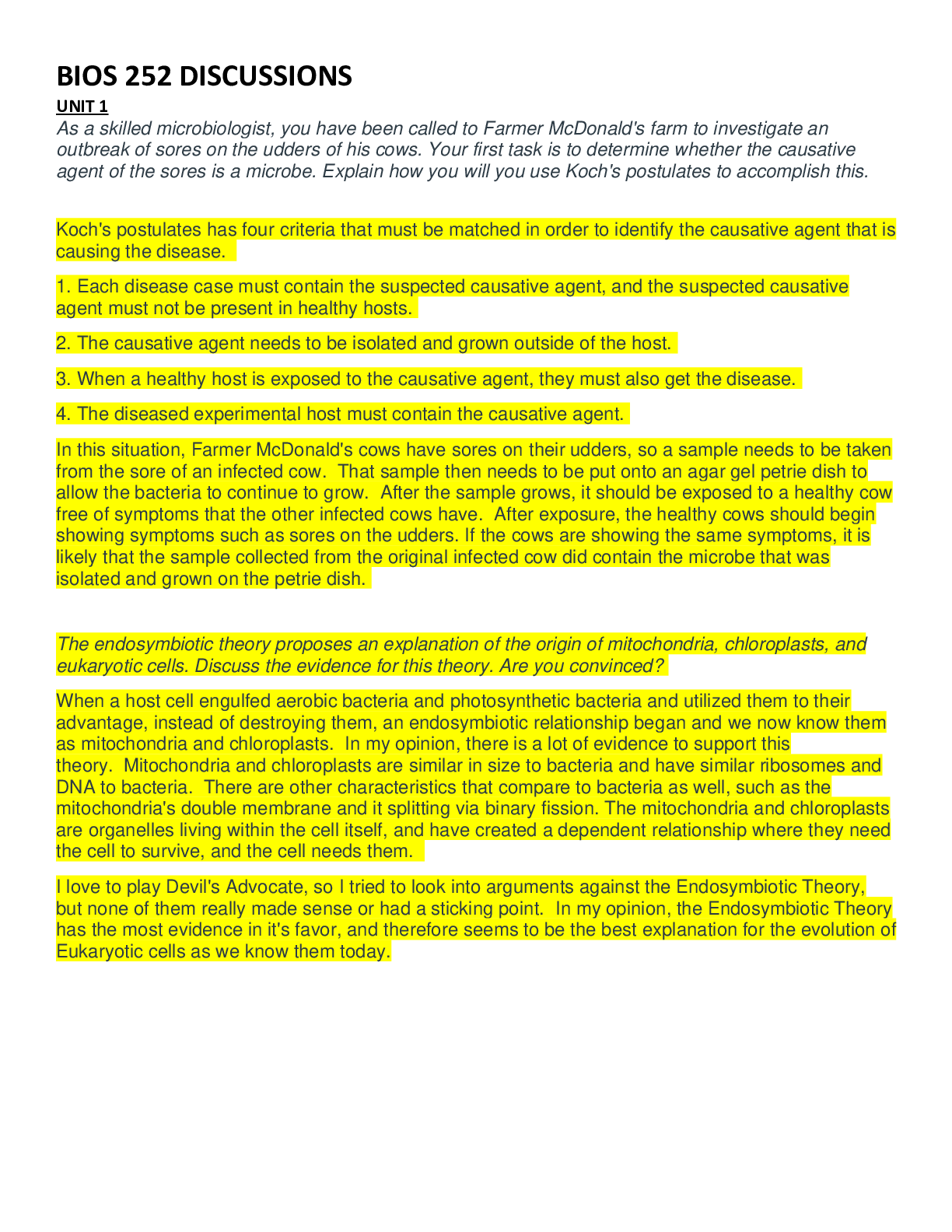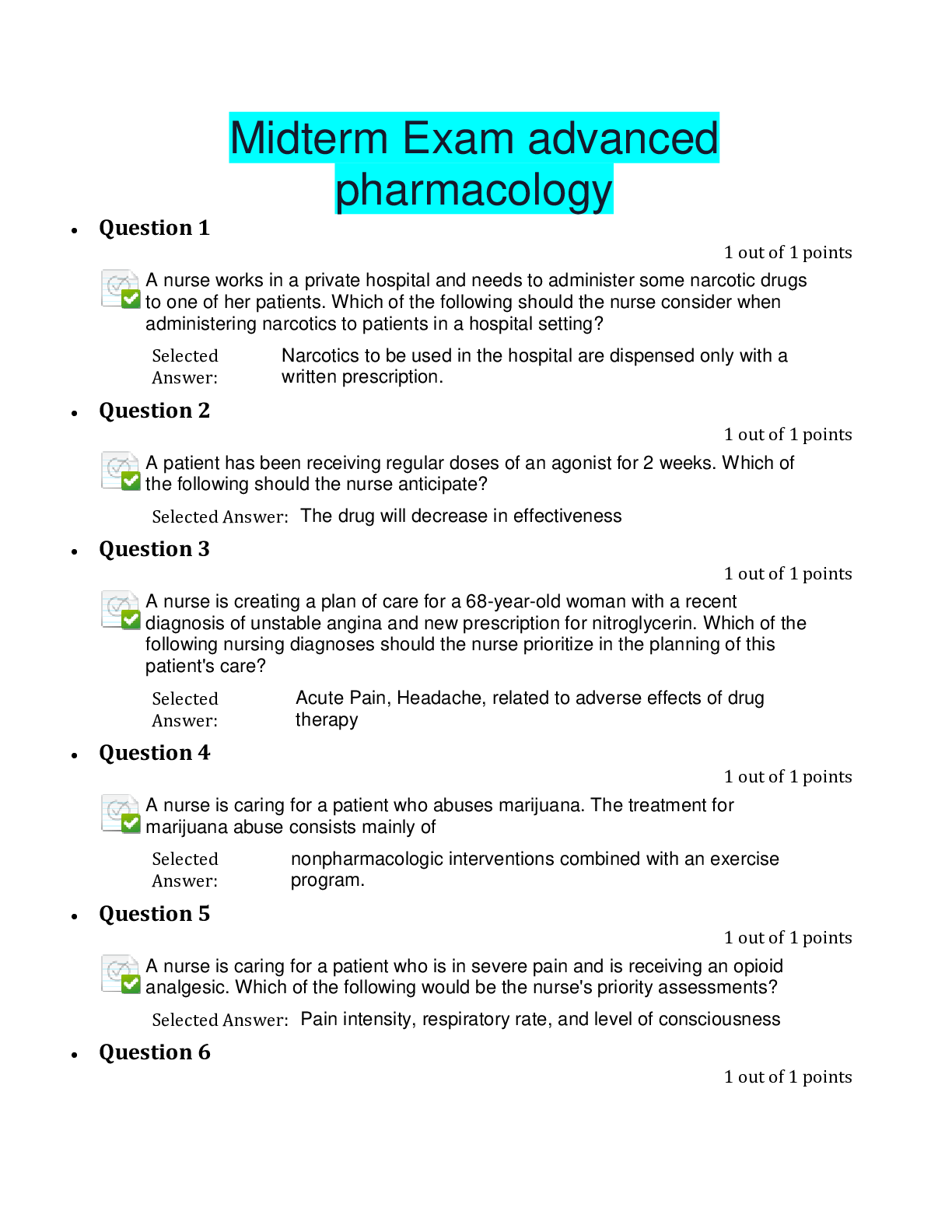*NURSING > QUESTIONS & ANSWERS > Walden University - NURS 6531 week 11 quiz. (GRADED A) (All)
Walden University - NURS 6531 week 11 quiz. (GRADED A)
Document Content and Description Below
week 11 quiz 1.A 75-year-old female is diagnosed with primary hyperparathyroidism and asks the nurse practitioner what the treatment for this disorder is. The nurse practitioner explains: A. Pr... imary hyperparathyroidism is treated with Vitamin D restriction B. Primary hyperparathyroidism is treated with parathyroidectomy C. Primary hyperparathyroidism is treated with daily magnesium D. Primary hyperparathyroidism is treated with parenteral parathyroid hormone (PTH) 2. Risk factors for Addison’s disease include which of the following? A. Tuberculosis B. Autoimmune disease C. AIDS D. All of the above 3. Which of the following medications increase the risk for metabolic syndrome? A. Antihistamines B. Proton pump inhibitors C. Protease inhibitors D. A and C E. All of the above 4.Central obesity, “moon” face, and dorsocervical fat pad are associated with: A. Metabolic syndrome B. Unilateral pheochromocytoma C. Cushing’s syndrome D. None of the above 5. Diagnostic evaluation of hypothyroidism reveals: A. Elevated TSH and decreased T4 B. Decreased TSH and increased T4 C. Decreased TSH and decreased T3 D. Elevated TSH and increased T4 6. Which of the following characteristics are associated with metabolic syndrome in women? A. Waist circumference > 80 cm B. Waist circumference > 70 cm C. Waist circumference > 60 cm D. None of the above 7. Diabetes screening recommendations for asymptomatic adults age 45 and over include which of the following: A. HbA1C B. 2-hour 75 gram oral glucose tolerance test C. C-peptide level D. A and B E. All of the above 8. A patient presenting for an annual physical exam has a BMI of 25 kg/m2 This patient would be classified as: A. Underweight B. Normal weight C. Overweight D. Obese 9. An 81-year-old female is diagnosed with type 2 diabetes. When considering drug therapy for this patient, the nurse practitioner is most concerned with which of the following side effects? A. Weight gain B. Fracture risk C. Hypoglycemia D. Weight loss 10. Hyperthyroidism is associated with: A. Diminished thyroid hormone B. Shortness of breath C. Angina D. B and C E. All of the above [Show More]
Last updated: 2 years ago
Preview 1 out of 4 pages
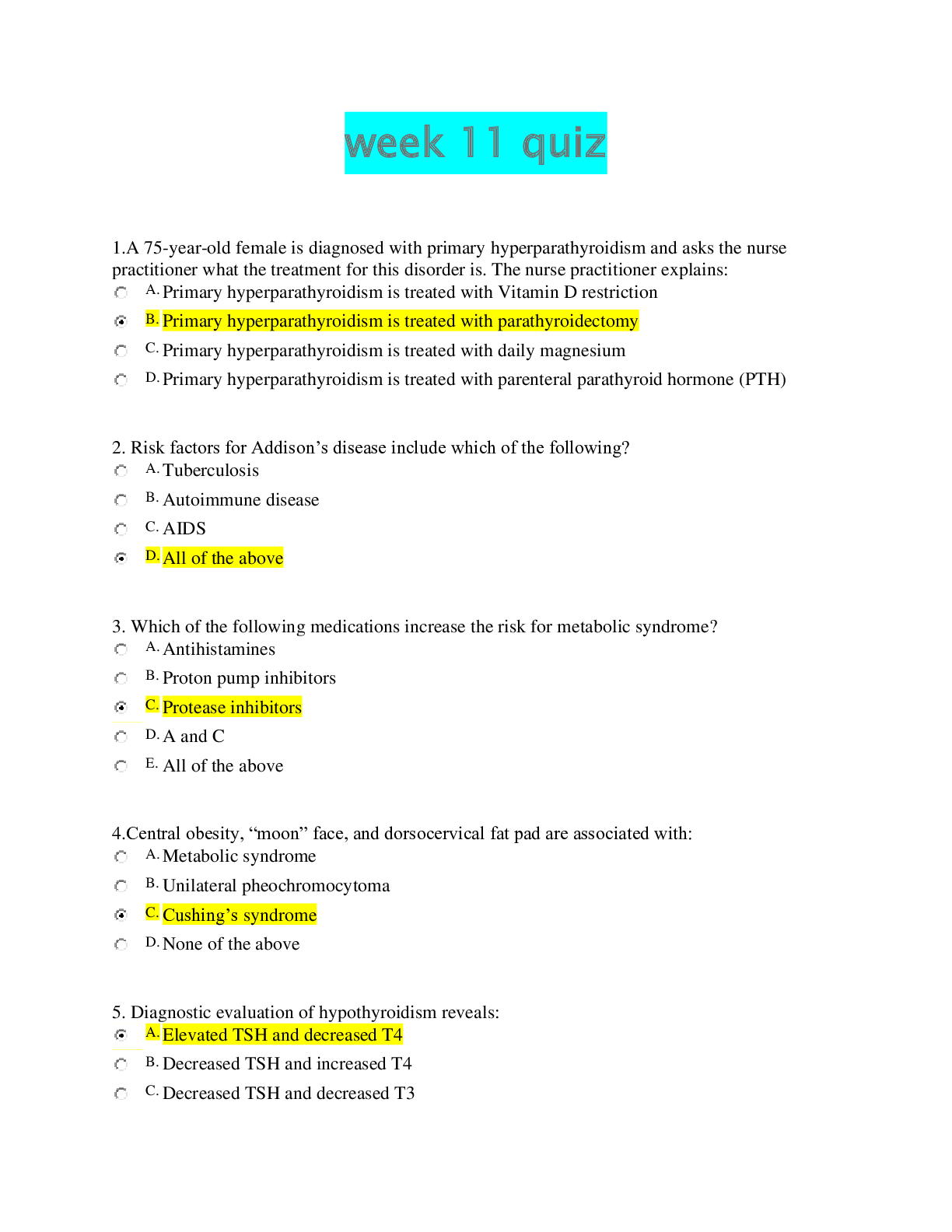
Buy this document to get the full access instantly
Instant Download Access after purchase
Buy NowInstant download
We Accept:

Reviews( 0 )
$5.00
Can't find what you want? Try our AI powered Search
Document information
Connected school, study & course
About the document
Uploaded On
Apr 15, 2020
Number of pages
4
Written in
Additional information
This document has been written for:
Uploaded
Apr 15, 2020
Downloads
0
Views
133

